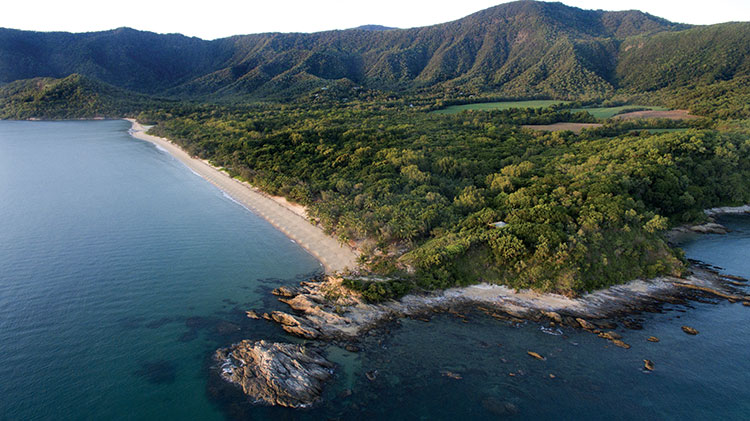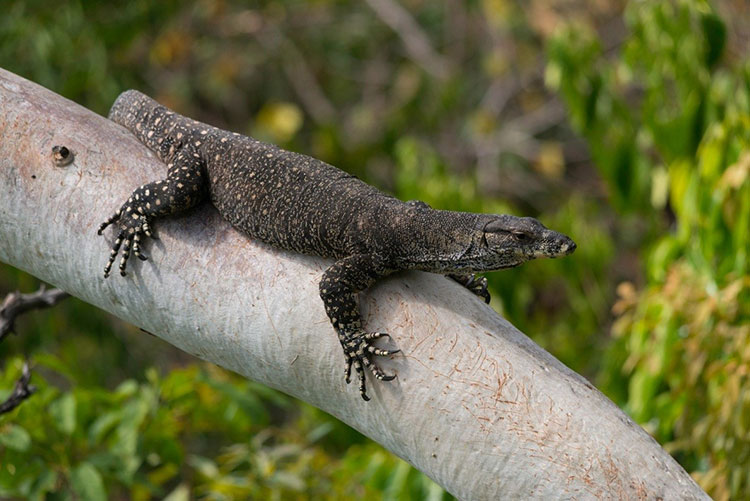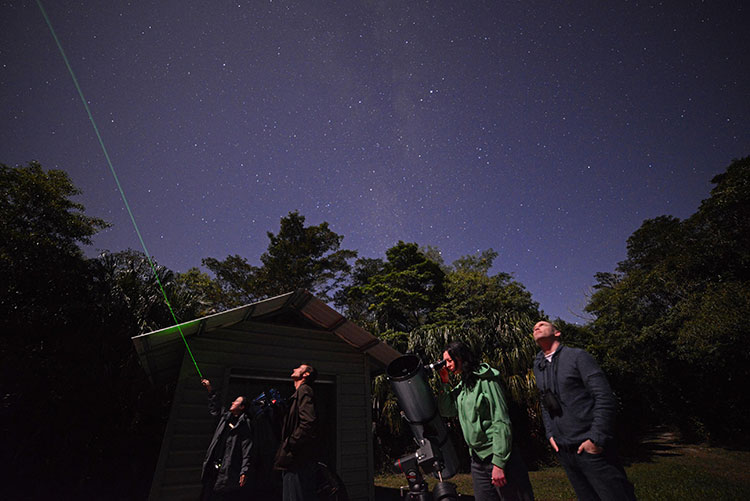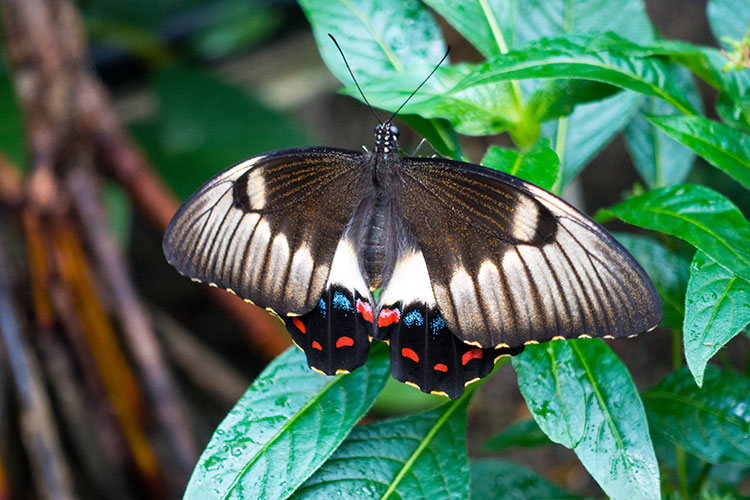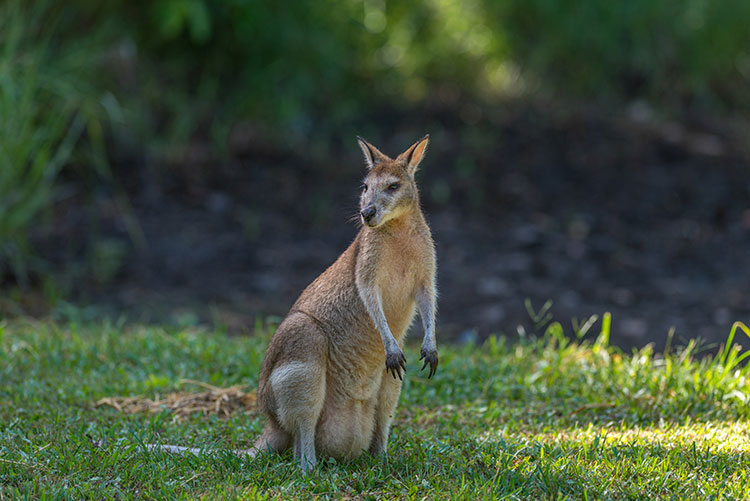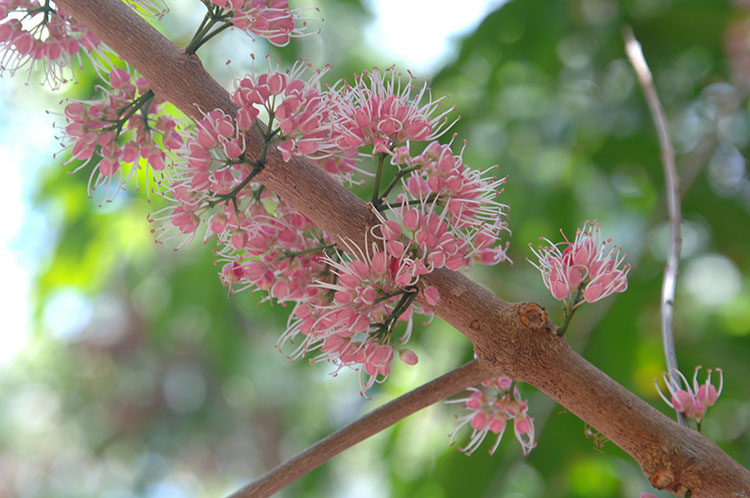Eco Tourism at Thala Beach Nature Reserve
Thala Beach Nature Reserve, located between Cairns and Port Douglas in Queensland, Australia, is awarded the highest Ecotourism accreditation for maximising informative & meaningful experiences, whilst enhancing the local environment. The Thala Experience adheres to global principals of Ecotourism.
After ten consecutive years meeting the strict criteria for Advanced Ecotourism status, in 2017 Thala was awarded Green Travel Leader status with Ecotourism Australia.
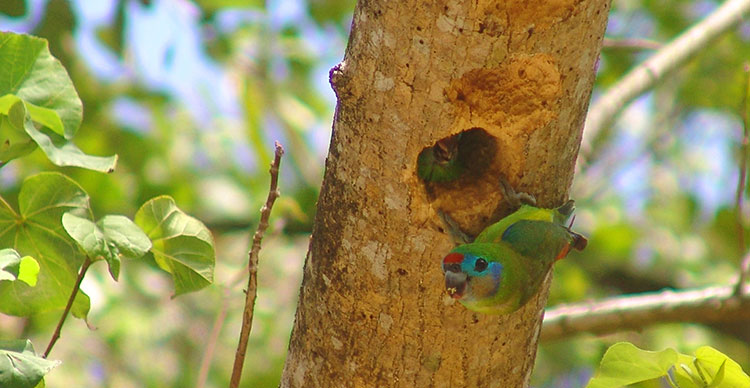
Natural area focus
Thala is built atop a private peninsular jutting into the Coral Sea, surrounded by miles of World Heritage coastline and The Great Barrier Reef Marine Park on the seaward side. The private beachfront has been left as nature intended it to be. Thala’s magnificent 145 acre peninsular has six different habitats concentrated into this small area:
- Eucalypt Woodlands on top of the main ridge and flats (includes grass trees and cycads).
- Beach and coastal vegetation such various Paperbark species and beach sheoaks (Casuarinas) (littoral forest).
- Lowland vine thicket/rainforest
- Patches of rainforest on the valley floor including seasonal creeks (gallery forest)
- Mangroves at the southern end of Oak Beach
- Coconut Plantation
Each habitat attracts its own unique wildlife species.
Environmental sustainability
In the early 1970’s Rob & Oonagh Prettejohn purchased the 58 hectare/145 acre peninsula. At the time, the land comprised just 45 acres of original native forest. The balance had been cleared and was a degraded, unsustainable sugar cane plantation. Environmental sensitivities were not as they are today and planning approval at the time would have allowed for a 700-bedroom hotel to be built! Fortunately, as locals with a feel for a low impact on this wonderful environment, this was not their style. They planted many thousands of indigenous plants to rehabilitate the area and start its return to a wild natural state. The Main Lodge and all bungalows are built out of natural sustainable materials in a low impact style that does not dominate, rather enhances, the surrounding landscape. Thala opened in 1998.
Conservation & wildlife habitat
Thala Beach Nature Reserve is a beacon of hope as mankind progresses from being ‘the demolisher’ to ‘the conserver’ and now to ‘the environmental benefactor’. Over a period of 30 years, Rob and Oonagh have shepherded the re-establishment of complex forests on land that was once cleared and devastated by extractive farming. With the return of the forests, wildlife populations have exploded bringing their pulsating natural energy.
Approximately 120 butterfly species and almost 200 bird species have been spotted at Thala. On site rangers estimate that there are at least 50 agile wallabies inhabiting the forest. Young joeys and pregnant females are regularly sighted, indicating a thriving population. Frogs, lace monitor lizards, sugar gliders, echidnas, spiders and geckos are in abundance too.
Customer satisfaction
Thala employs wildlife specialists who are on hand to guide and amaze their guests in the forests, the beaches or along Thala’s rocky headland. Complimentary tours are offered in a personalised, relaxed and unregimented fashion, designed so that guests enjoy the thrill of making their very own discoveries. Guests might see rare snub-finned dolphins or a resident osprey diving for fish to feed her chicks. Perhaps, while strolling through rainforest, they’ll spot some of the many bird and butterfly species. Guests are encouraged to add new sightings to the growing lists recorded.
Thala has many permanent guests: they are recognisable by their wild temperament and generous covering of fur, feathers or scales. They are constantly surprising and delighting the transient humans. At night there is an observatory where guests are taken time travelling to the far reaches of The Milky Way on a guided Stargazing Odyssey.
Responsible marketing
All marketing material at Thala, (brochures, website, flyers and all images displayed on website and social media) are actual photographs taken, and are true images of what guests can expect to experience. The brochure can be viewed on the website, reducing the necessity for mass print outs.
Leaving a soft footprint
Guests at eco-lodges like Thala leave a soft footprint in an environmental journey towards a better world. They take away memories and an understanding that will inspire them and others for years to come. Their active involvement at Thala also assists in the environmental rehabilitation process. Rob & Oonagh Prettejohn and their staff are proud to be associated with the modern and thoughtful ethos for which Australia’s Eco Accreditation scheme upholds the highest standards.
Thank you for your interest in helping us to help the planet!
Local Environment
Great sensitivity is paid to the natural environment that Thala shares with the local plants and animals. Thala has achieved the highest possible accreditation of eco tourism awarded to resorts and hotels from Eco Tourism Australia. Conservation and sustainability is a top priority for Thala and guests are encouraged to tread softly and appreciate the local environment.
Local Habitats
Thala Beach Nature Reserve contains some unique habitats ranging from rainforest, open woodlands, mangrove forest, grasslands, regrowth areas, a rich coastal marine environment and the coconut plantation, all surrounded in world heritage forest.
The lodge itself is situated amongst a natural stand of Eucalyptus forest/dry woodland forest. The dominant species through this forest are the Eucalyptus platyphylla (commonly called Poplar Gums). Thala is locally famous for its fine display of these beautiful eucalypts. If you’re lucky you may spot Sugar Gliders and Striped Possums as they move through these trees feeding then roost in the tree hollows during the day.
Dry rainforest or vine thicket forest, as it’s sometimes described, is adjacent to the mangroves and sand dune systems. Rich in ground ferns, tall canopy trees and vines, this type of forest is rare on the coast these days. This forest contains many mixed species of plant life, some of which are very rare and endangered. This is an area you may come across bird life not often seen in other parts of the property. Orange footed scrub fowl nest here in large mounds of composting vegetation and have done so for many generations. A path makes its way gently through this forest continuing on to other habitats as it continues its circuit.
Behind the sand dunes of Oak Beach stretching to the southern end of the beach is a system of mangroves containing tidal creeks and lagoons with a rich array of salt-resistant mangrove plants. Some of these areas are easily accessed and our guides would be happy to enlighten you on these biologically rich tidal forests.
Grassland and regrowth forest are areas sugar cane once thrived , now pioneer trees and a mix of grasses dominate making it a perfect habitat for grazing wallabies.
Local plants
Thala’s native forest contains some interesting species that are unique to tropical north Queensland. Check out the Gallery page for an extensive gallery of wildlife and plant photos.
Local wildlife
Thala Beach Nature Reserve is home to an abundance of wildlife. During your experience you may be lucky enough to spot some of these unique animals in their natural existence.
Sparse or rare in Australia, the Striped Possum can be spotted at Thala Beach Nature Reserve if you are lucky – recognisable by the black and white striping running the length of its body. There are four species of striped possum, three found in Papua New Guinea and one in Australia. Sleeping during the day in a leaf lined nest in a tree hole – it emerges during the night to leap through the forest canopy and feed on wood-boring insect larvae. Very little is known about the reproductive biology of this elusive marsupial.
Typically 285 – 400 mm in length, the Musky Rat Kangaroo is the smallest of the macropod family. It sleeps at night in a nest of vegetation and forages by daylight hours on the forest floor for fruit and insects. It is only found in a limited area in North Queensland and lives a solitary existence.
Another unique Australian spotted at Thala Beach Nature Reserve is the Red Eyed Green Tree frog. Strikingly coloured with a green back, deep yellow underside and a pair of bright orange irises it is easily recognisable. Growing to a length of 65 mm and mainly spotted in wet coastal rainforest the males are mainly heard calling from October to February – during and after heavy rain.
Often heard before it is seen – the Laughing Kookaburra emits a boisterous ‘laughing’ call. It is the largest of the kingfisher family and has a large bill that it sometimes uses to tackle small reptiles.
“I have been birding for 30 years and this is the best area in Australia,” says David, our bird and butterfly expert. “In the whole of Australia there are some 750 species and up here we have over 400. This is because of the different habitats and climates we have. Rainforest, open forest, dry country, swamps, mountains and the sea all next to each other !”
You will be thrilled at the colour and variety of species to be found at Thala. An early start to hear the first chorus of birds in full song is a wonderful way to welcome a new day.
Check out the gallery page for photos of wildlife and plants at Thala Beach Nature Reserve.

